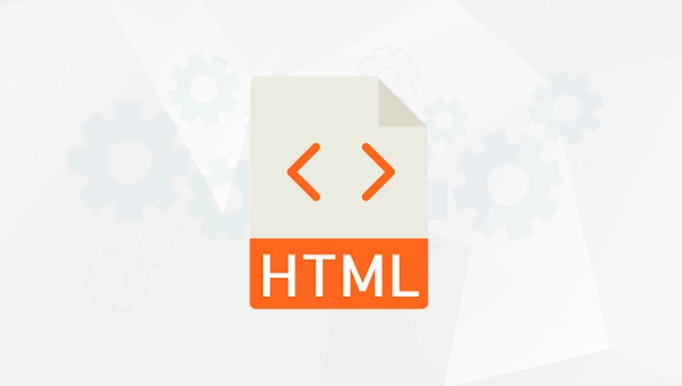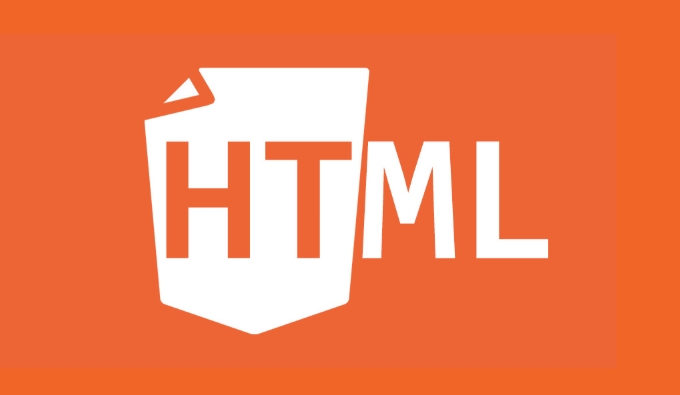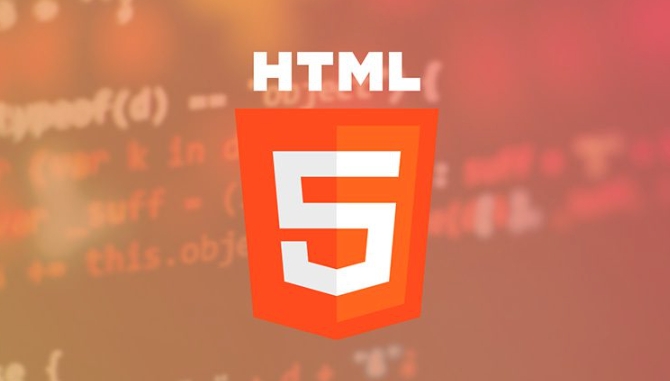HTML中的链接RER预取和预紧额有什么区别?
rel="preload"用于当前页面急需的高优先级资源,而rel="prefetch"用于未来可能需要的低优先级资源。1. rel="preload"告诉浏览器立即下载关键资源如字体、脚本或样式表以提升当前页面渲染速度;2. rel="prefetch"则作为提示,让浏览器在空闲时下载可能在后续导航中使用的资源,例如下一页的CSS或JS文件。两者都旨在优化加载性能,但适用场景不同,错误使用可能导致带宽浪费或性能下降。

The difference between link rel="prefetch" and link rel="preload" in HTML comes down to purpose and timing. While both are used for resource loading optimizations, they serve different roles and should be used in specific contexts.

What is rel="prefetch"?
Prefetch is a low-priority hint to the browser that a resource might be needed in the future, possibly on a follow-up navigation or page load. It’s best used when you’re not 100% sure if the user will need the resource, but there's a good chance they will.

For example:
- Prefetching the next page’s CSS or JS when a user hovers over a link.
- Preloading assets for a mobile site version when a user is on desktop.
Common use cases:

- Navigation-based predictions (like next pages)
- Lazy-loaded resources that may be needed later
<link rel="prefetch" href="/next-page.css" as="style">
Note: The browser downloads these only when the current page’s critical resources are done.
What is rel="preload"?
Preload, on the other hand, is a high-priority instruction telling the browser that a resource will be needed very soon, often during the current page load. This helps prioritize early loading of key assets like fonts, scripts, or images critical to rendering.
For example:
- Loading a custom font before it's needed to avoid FOIT (Flash of Invisible Text).
- Fetching an important JavaScript file that’s referenced late in the page.
<link rel="preload" href="/important-script.js" as="script">
This tells the browser: “Start downloading this now, even if it’s not referenced yet.”
You can also preload things like:
- Fonts (
as="font") - Images (
as="image") - Stylesheets (
as="style")
⚠️ Be careful with preload — if you specify a resource that isn’t actually used, it wastes bandwidth.
When to Use Which?
Here’s a quick guide:
-
✅ Use preload when:
- You know exactly what resource is needed for the current page.
- You want to speed up rendering by getting key files loaded earlier.
- You're dealing with render-blocking resources like fonts or async scripts.
-
✅ Use prefetch when:
- You're guessing what the user might do next (like clicking a link).
- You want to prepare for a future navigation without slowing down the current one.
- You're optimizing for multi-page flows (e.g., pagination).
Key Differences Summary
| Feature | rel="preload" |
rel="prefetch" |
|---|---|---|
| Priority | High | Low |
| Timing | Needed immediately (current page) | Likely needed later (next page/navigate) |
| Browser Behavior | Starts download right away | Waits until idle |
| Resource Type | Critical for current rendering | Optional or speculative |
So, basically, preload is for "need now," prefetch is for "might need later."
They’re both powerful tools when used correctly, but misuse can hurt performance instead of helping it.
以上是HTML中的链接RER预取和预紧额有什么区别?的详细内容。更多信息请关注PHP中文网其他相关文章!

热AI工具

Undress AI Tool
免费脱衣服图片

Undresser.AI Undress
人工智能驱动的应用程序,用于创建逼真的裸体照片

AI Clothes Remover
用于从照片中去除衣服的在线人工智能工具。

Clothoff.io
AI脱衣机

Video Face Swap
使用我们完全免费的人工智能换脸工具轻松在任何视频中换脸!

热门文章

热工具

记事本++7.3.1
好用且免费的代码编辑器

SublimeText3汉化版
中文版,非常好用

禅工作室 13.0.1
功能强大的PHP集成开发环境

Dreamweaver CS6
视觉化网页开发工具

SublimeText3 Mac版
神级代码编辑软件(SublimeText3)
 使用HTML按钮元素实现可点击按钮
Jul 07, 2025 am 02:31 AM
使用HTML按钮元素实现可点击按钮
Jul 07, 2025 am 02:31 AM
要使用HTML的button元素实现可点击按钮,首先需掌握其基本用法与常见注意事项。1.使用标签创建按钮,并通过type属性定义行为(如button、submit、reset),默认为submit;2.通过JavaScript添加交互功能,可内联写法或通过ID绑定事件监听器以提升维护性;3.利用CSS自定义样式,包括背景色、边框、圆角及hover/active状态效果,增强用户体验;4.注意常见问题:确保未启用disabled属性、正确绑定JS事件、避免布局遮挡,并借助开发者工具排查异常。掌握这
 在HTML头部元素中配置文档元数据
Jul 09, 2025 am 02:30 AM
在HTML头部元素中配置文档元数据
Jul 09, 2025 am 02:30 AM
HTMLhead中的元数据对SEO、社交分享和浏览器行为至关重要。1.设置页面标题与描述,使用和并保持简洁唯一;2.添加OpenGraph与Twitter卡片信息以优化社交分享效果,注意图片尺寸并使用调试工具测试;3.定义字符集与视口设置确保多语言支持与移动端适配;4.可选标签如作者版权、robots控制及canonical防止重复内容也应合理配置。
 如何使用HTML图和Figcaption元素将字幕与图像或媒体关联?
Jul 07, 2025 am 02:30 AM
如何使用HTML图和Figcaption元素将字幕与图像或媒体关联?
Jul 07, 2025 am 02:30 AM
使用HTML的和可以直观且语义清晰地为图片或媒体添加说明文字。1.用于包裹独立的媒体内容,如图片、视频或代码块;2.则作为其说明文字,置于内部,可位于媒体上方或下方;3.它们不仅提升页面结构清晰度,还增强可访问性和SEO效果;4.使用时应注意避免滥用,适用于需强调并附带说明的内容,而非普通装饰图;5.不可忽视的alt属性,它与figcaption的作用不同;6.figcaption位置灵活,可根据需要放在figure内顶部或底部。正确使用这两个标签,有助于构建语义清晰、易于理解的网页内容。
 如何使用HTML iframe标签从另一个站点嵌入内容?
Jul 04, 2025 am 03:17 AM
如何使用HTML iframe标签从另一个站点嵌入内容?
Jul 04, 2025 am 03:17 AM
使用标签可以将其他网站内容嵌入到自己的网页中,基本语法为:,可添加width、height和style="border:none;"等属性控制外观;为了实现响应式布局,可通过百分比设置尺寸或使用容器结合padding和绝对定位保持宽高比,同时注意跨域限制、加载性能、SEO影响及安全策略等注意事项;常见用途包括嵌入地图、第三方表单、社交媒体内容及内部系统集成。
 HTML中最常用的全局属性是什么?
Jul 10, 2025 am 10:58 AM
HTML中最常用的全局属性是什么?
Jul 10, 2025 am 10:58 AM
class、id、style、data-、title是HTML中最常用的全局属性。class用于指定一个或多个类名以方便样式设置和JavaScript操作;id为元素提供唯一标识符,适用于锚点跳转和JavaScript控制;style允许添加内联样式,适合临时调试但不推荐大量使用;data-属性用于存储自定义数据,便于前后端交互;title用于添加鼠标悬停提示,但其样式和行为受限于浏览器。合理选择这些属性可提升开发效率和用户体验。
 使用HTML选择和选项元素创建下拉列表
Jul 05, 2025 am 01:40 AM
使用HTML选择和选项元素创建下拉列表
Jul 05, 2025 am 01:40 AM
要实现网页中的下拉列表,常用方法是使用HTML中的和标签组合。1.基本结构:通过包裹多个创建可选项菜单;2.设置默认选中项:在某个上添加selected属性;3.分组显示选项:使用将选项按分类组织;4.多选功能:为添加multiple属性以支持多选。此外还可结合required和name属性增强表单功能。
 HTML中的链接RER预取和预紧额有什么区别?
Jul 07, 2025 am 02:22 AM
HTML中的链接RER预取和预紧额有什么区别?
Jul 07, 2025 am 02:22 AM
rel="preload"用于当前页面急需的高优先级资源,而rel="prefetch"用于未来可能需要的低优先级资源。1.rel="preload"告诉浏览器立即下载关键资源如字体、脚本或样式表以提升当前页面渲染速度;2.rel="prefetch"则作为提示,让浏览器在空闲时下载可能在后续导航中使用的资源,例如下一页的CSS或JS文件。两者都旨在优化加载性能,但适用场景不同,错误使用可能导致带宽浪费或性能下降。
 在HTML中实现图像的本机懒负荷
Jul 12, 2025 am 12:48 AM
在HTML中实现图像的本机懒负荷
Jul 12, 2025 am 12:48 AM
原生懒加载是一种浏览器内置功能,通过在标签中添加loading="lazy"属性实现延迟加载图片。1.它无需JavaScript或第三方库,直接在HTML中使用;2.适合用于页面下方非首屏显示的图片、图片画廊滚动加载项和大型图片资源;3.不适合首屏图片或display:none的图片;4.使用时应设置合适的占位空间以避免布局抖动;5.应结合srcset和sizes属性优化响应式图片加载;6.需要考虑兼容性问题,部分旧浏览器不支持,可通过特性检测并结合JavaScript方案作







